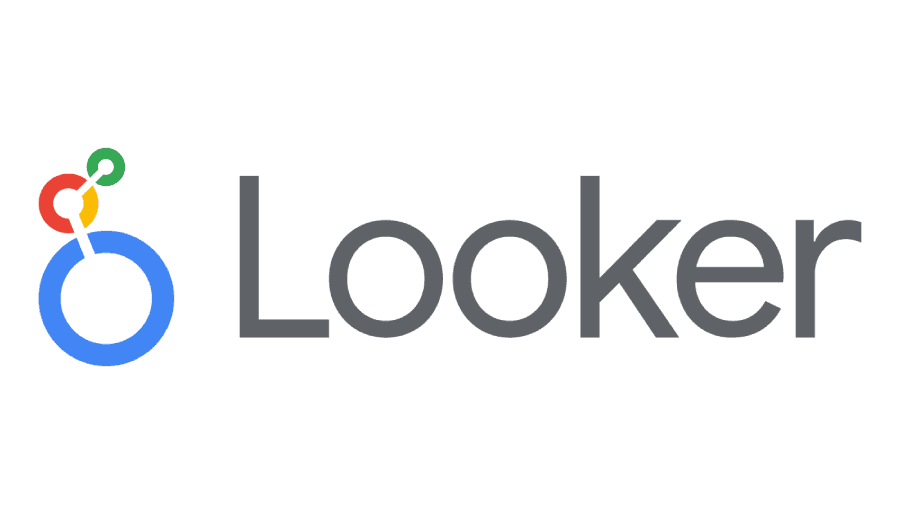Choosing the right analytics tool for your website or online business is like picking the perfect assistant. You want something (or someone) reliable, insightful, and ready to give you the lowdown on what’s happening without making things too complex. In the vast ocean of analytics tools, Clicky and Looker stand out, but for very different reasons. If you’ve found yourself scratching your head, wondering which of these tools is the perfect fit for your needs, you’re in the right place. Let’s untangle the web of features, usability, and support these platforms offer, starting with a key aspect that could very well be the deal-maker (or breaker) for you: Real-Time Analytics and Data Processing.
Clicky | Looker |
|---|---|
| G2 Score – 4.5 out of 5 stars | G2 Score – 4.4 out of 5 stars |
| TrustRadius Score – 5/10 | TrustRadius Score – 8/10 |
Real-Time Analytics and Data Processing
In the fast-paced digital world, real-time analytics isn’t just a nice-to-have; it’s essential. How quickly your analytics tool can process and present data can significantly impact your decision-making and strategy adjustment speed. So, let’s put Clicky and Looker head-to-head on this front.
Clicky: The Speedy Insight Gatherer
Clicky is somewhat of a speedster in the world of web analytics. It provides real-time data, meaning as soon as someone visits your site, clicks a link, or bounces off a page, you’ll know about it. This immediacy can be incredibly valuable for dynamic content strategies or when running time-sensitive promotions. You can see what’s working (or not) and adjust on the fly.
Besides its real-time capabilities, Clicky is lauded for its straightforward approach to data presentation. You don’t need to be a data scientist to make sense of your website’s performance. The platform offers a clean, user-friendly interface that makes accessing and understanding your data easy peasy. Whether you’re tracking conversions, monitoring individual visitors, or analyzing site heatmaps, Clicky keeps things refreshingly simple.
Looker: The Deep Dive Data Analyst
Looker takes a different approach. It’s like the wise sage of data analytics, offering not just surface-level insights but deep, comprehensive analyses. While Looker might not specialize in real-time data in the same way Clicky does, its strength lies in its powerful data modeling capabilities. Looker can handle vast datasets, transforming them into actionable insights and detailed reports that can inform strategic decisions.
What sets Looker apart is its ability to integrate with a multitude of databases and software, allowing for complex data exploration and visualization. It’s a tool designed with the data-driven decision-maker in mind, offering customizable dashboards and reports that can delve into the nitty-gritty of your business’s performance. However, this depth comes with a steeper learning curve. Getting the most out of Looker requires a solid understanding of data analysis principles and possibly some SQL knowledge.
Integration Capabilities and Ecosystem
In today’s interconnected digital world, the ability of an analytics tool to play nice with other software in your stack can make or break your workflow efficiency. Here’s how Clicky and Looker stack up when it comes to integration capabilities.
Clicky: Keeping It Simple and Straightforward
Clicky, with its focus on real-time analytics and user-friendly interface, keeps its integration capabilities similarly straightforward. It offers direct integration options with some of the most popular web platforms and services, such as WordPress, Shopify, and Wix, making it easy to start tracking website data with minimal setup.
One of Clicky’s strengths in its integration approach is the simplicity it brings to the table. For small to medium-sized businesses or individual webmasters, this means less time spent on setup and more time analyzing data. Additionally, Clicky’s API allows for custom integrations, offering flexibility for those with the technical know-how to take advantage of it.
While Clicky might not boast the extensive ecosystem of integrations that some other analytics platforms offer, its straightforward approach ensures that the most common needs are covered, making it an accessible choice for many users.
Looker: The Powerhouse of Integrations
Looker, on the other hand, is designed for deep data analysis and thus offers a robust set of integration capabilities designed to pull in data from virtually anywhere. Its ability to connect with a wide array of databases and software platforms is a core part of its offering. Looker supports integrations with major SQL databases, Google BigQuery, Amazon Redshift, Snowflake, and more, allowing businesses to centralize their data analysis in one powerful tool.
Moreover, Looker’s extensive API and SDKs open the door for custom development, enabling businesses to tailor the platform to their specific needs. This level of integration capability is particularly valuable for large enterprises or organizations with complex data ecosystems. It allows for the creation of a truly integrated data analysis environment where insights from various sources can be combined and analyzed in depth.

Related: Check out our free SEO suite

Customer Support and Community
An analytics tool can have all the features in the world, but without strong support and a helpful community, users can find themselves lost in a sea of data. Let’s see how Clicky and Looker fare in providing assistance to their users.
Clicky: Direct and Efficient Support
Clicky is known for its straightforward and efficient customer support. Users have access to a range of support resources, including a comprehensive FAQ section, detailed documentation, and a ticket-based support system for direct inquiries. Clicky’s support team is praised for being responsive and helpful, often providing personalized solutions to users’ issues.
Moreover, Clicky’s approachable nature extends to its community. While it may not have the largest user community, the quality of engagement and willingness to help among its users is high. New users can often find answers to their questions through community forums and discussions, though these may not be as extensive as those for larger platforms.
Looker: Extensive Resources and Community Engagement
Looker, given its positioning towards enterprises and businesses with complex data needs, offers a robust support system. Users benefit from a wide array of resources, including detailed documentation, a comprehensive knowledge base, and direct support through email or chat. Looker also provides training sessions and has a dedicated customer success team for onboarding new clients, ensuring they get the most out of the platform.
The Looker community is a significant asset, featuring a vibrant forum where users can ask questions, share insights, and find solutions to common (and uncommon) issues. The community is backed by a strong presence of Looker experts and enthusiasts who contribute valuable content, including tutorials, guides, and best practices. For organizations that rely heavily on their analytics tool, this level of support and community engagement can be a game-changer.
Scalability and Future-Proofing Your Analytics
As your business grows, your data analytics needs will evolve. The tool that suits you now should also be able to support your future plans. Here’s how Clicky and Looker stack up in terms of scalability and preparing your analytics capabilities for the future.
Clicky: Growing with Your Site
Clicky is designed with the flexibility to cater to websites and businesses as they grow. Its tiered pricing model means you can start small and scale up as your site’s traffic increases. This scalability is particularly appealing for startups, small businesses, and personal sites that anticipate growth but don’t want to overcommit resources upfront.
However, while Clicky scales well for increasing traffic volumes, it may not match the evolving complexity of data analytics needs that come with significant business expansion. Its strengths lie in real-time analytics and user-friendly insights, which are incredibly valuable for content-driven sites and SMEs but may fall short for large enterprises with complex data analysis requirements.
Looker: Built for Complexity and Expansion
Looker, with its comprehensive data modeling and analytics capabilities, is inherently designed for scalability. It caters to the needs of large enterprises and organizations with complex data ecosystems from the get-go. Looker’s platform is built to handle extensive datasets and intricate analysis, making it a future-proof choice for businesses planning significant growth or those already operating at a large scale.
The key to Looker’s scalability lies in its powerful BI (business intelligence) capabilities and the ability to integrate deeply with a multitude of data sources. As your business grows, Looker can accommodate an expanding scope of data analysis requirements, from advanced customer segmentation to predictive analytics.
Pricing and Value for Money
When it comes to selecting an analytics tool, budget considerations are front and center. Both Clicky and Looker offer different pricing models and packages, tailored to meet the needs of various users—from small blogs to large enterprises. Understanding the cost versus the value each tool provides is key to making an informed decision.
Clicky: Affordable and Straightforward Pricing

Clicky is known for its transparent and accessible pricing structure, making it a popular choice among small to medium-sized businesses and individual website owners. It offers a free version with basic analytics features, which is a great starting point for those new to web analytics or with minimal needs.
For more advanced features, Clicky provides several paid plans that scale with your needs, including options for real-time analytics, detailed reports, and heatmaps. The pricing is based on the volume of traffic your site receives, so you can choose a plan that fits your size and scale without overpaying for unused capacity.
The value for money with Clicky is excellent, especially for those who need straightforward, real-time analytics without a hefty price tag. It’s an attractive option for users who want to get a good grasp on their website’s performance without making a significant financial commitment.
Looker: Custom Pricing for Tailored Solutions

Looker operates on a different pricing model, reflecting its position as a comprehensive business intelligence and data analysis platform. Pricing for Looker is custom-tailored to each organization’s specific needs, taking into account factors such as the size of the business, the complexity of the data being analyzed, and the level of support required.
While this means that getting a clear upfront cost without contacting Looker directly is challenging, it also indicates that Looker is focused on providing a solution that precisely fits the needs of its users. For large enterprises or businesses with intricate data analysis needs, Looker’s custom pricing can offer a high value for money, given the depth of insights and optimization opportunities it unlocks.
Conclusion
Wrapping up our comprehensive look at Clicky versus Looker, it’s clear that choosing the right analytics tool for your needs hinges on several key factors, each of which caters to different preferences, business sizes, and analytical requirements. From real-time analytics and user interface to integration capabilities, customer support, and pricing models, both Clicky and Looker offer distinct advantages that make them stand out in their respective domains.
Clicky shines as a user-friendly, cost-effective solution for small to medium-sized businesses and individual site owners. Its strength lies in providing real-time analytics, straightforward user interface, and a pricing model that offers great value for those who need essential insights without the complexity or cost of more advanced tools. Clicky is best suited for users who prioritize ease of use, immediate data insights, and affordability.
Looker, on the other hand, positions itself as a powerful, enterprise-level analytics platform designed for businesses that require deep data analysis, extensive integration capabilities, and customizable reporting. With its robust support resources and vibrant community, Looker is ideal for organizations ready to invest in a comprehensive analytics solution that can inform complex decision-making processes. The platform’s custom pricing reflects its commitment to providing tailored solutions that meet the specific needs of large enterprises and data-driven businesses.
Read Next:
- ConvertKit vs Moosend: The Best Email Marketing Tool for 2024
- ActiveCampaign vs EmailOctopus: The Best Email Marketing Tool for 2024
- AWeber vs EmailOctopus: The Best Email Marketing Tool
- ConvertKit vs Mailjet: The Best Email Marketing Tool for 2024
- ActiveCampaign vs Campaigner: The Best Email Marketing Tool for 2024






















Comments are closed.